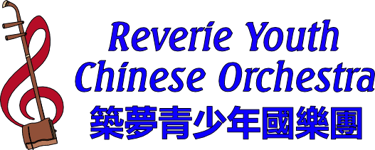
ABOUT CHINESE ORCHESTRA
Structure of Chinese Orchestra
The modern Chinese orchestra, or guoyuetuan (國 樂 團), is organized along the lines of the Western symphony orchestra in that both have a conductor, full scores, and instruments grouped in sections. The Chinese orchestra has four sections: bowed string, plucked string, wind, and percussion. The Chinese orchestra does not have a brass section and the Western orchestra does not have a plucked strings section.
The bowed string section includes several sizes of erhu-type instruments that are similar to the Western violin family of instruments. The bowed string section is subdivided into two sections and the erhu first chair is the concertmaster.
The plucked string section is unique to Chinese orchestra and includes instruments such as the pipa, yangqin, and guzheng. Plucked instruments have always been popular historically in China and it is this section that most exemplifies the unique sound of the Chinese orchestra.
The wind section includes instruments such as the dizi, sheng, and, suona which are similar to the Western concert flute, organ, and oboe, respectively.
The percussion section incudes many different types of gongs, cymbals and drums.
Chinese orchestra also includes some Western instruments such as the cello for their suitability to certain types of music.


